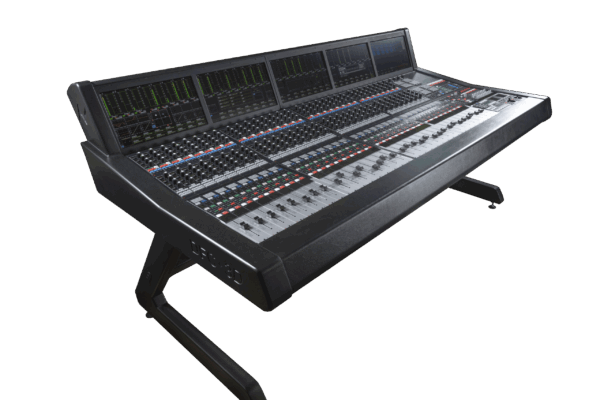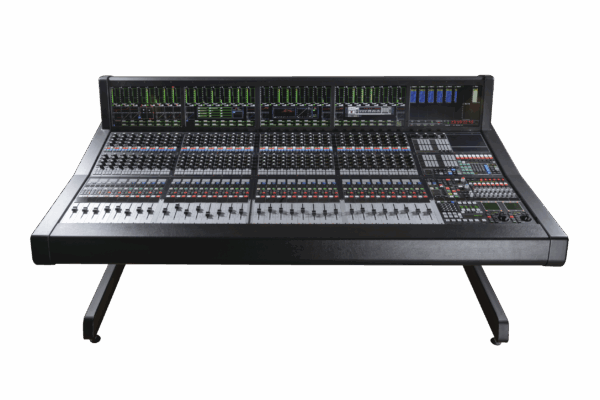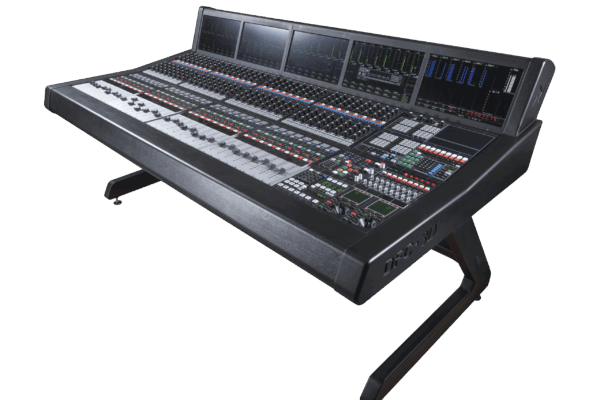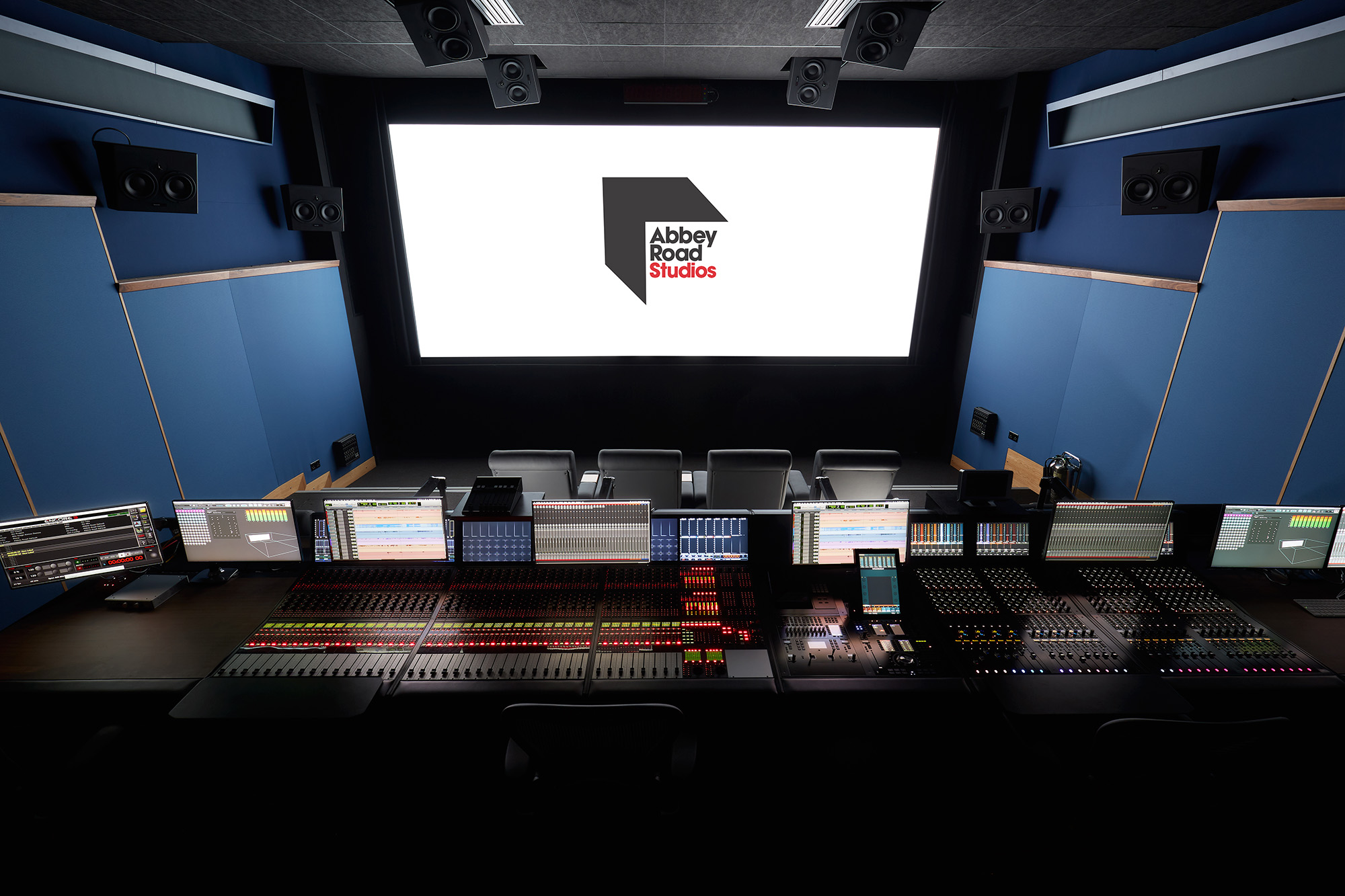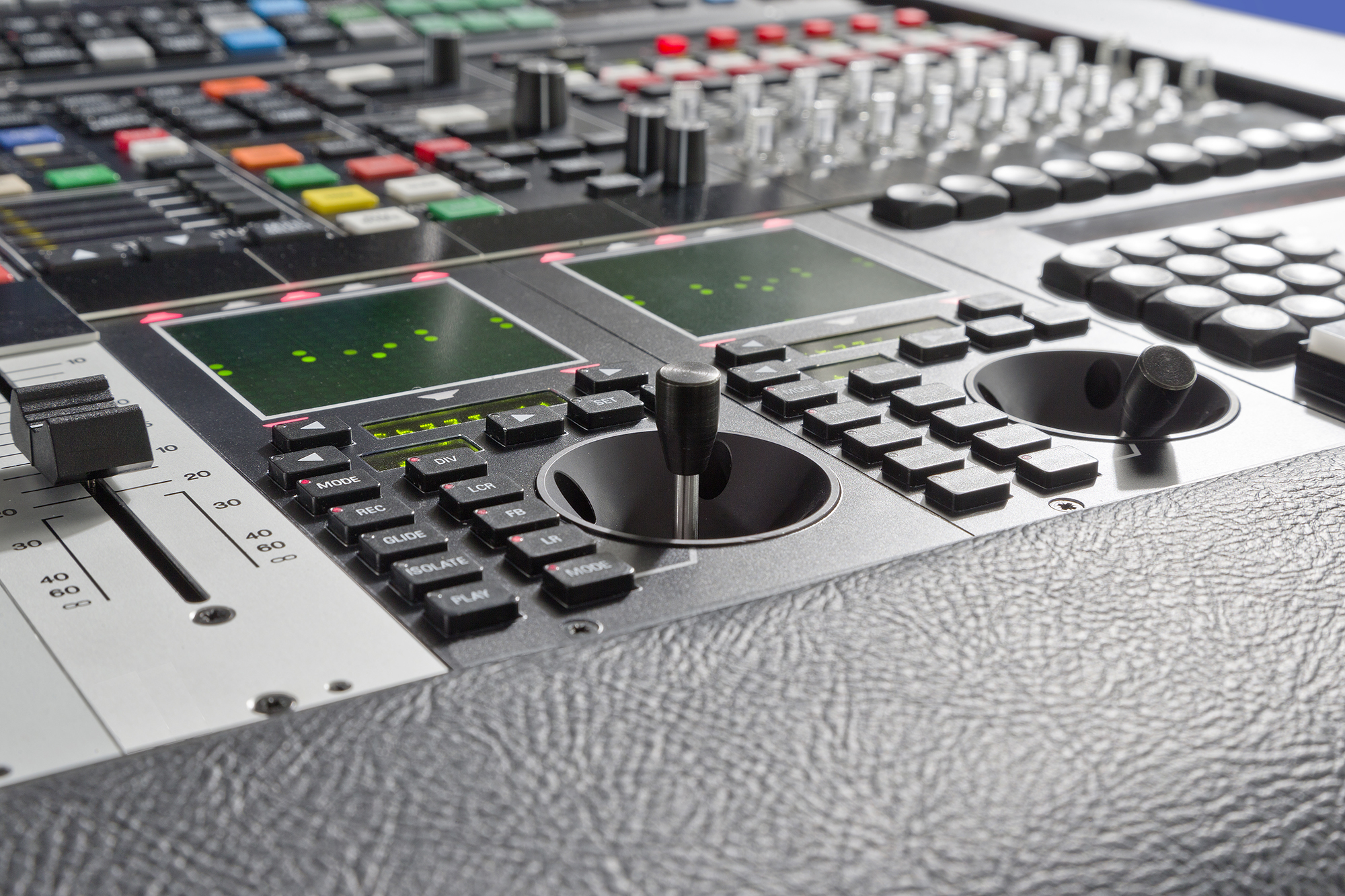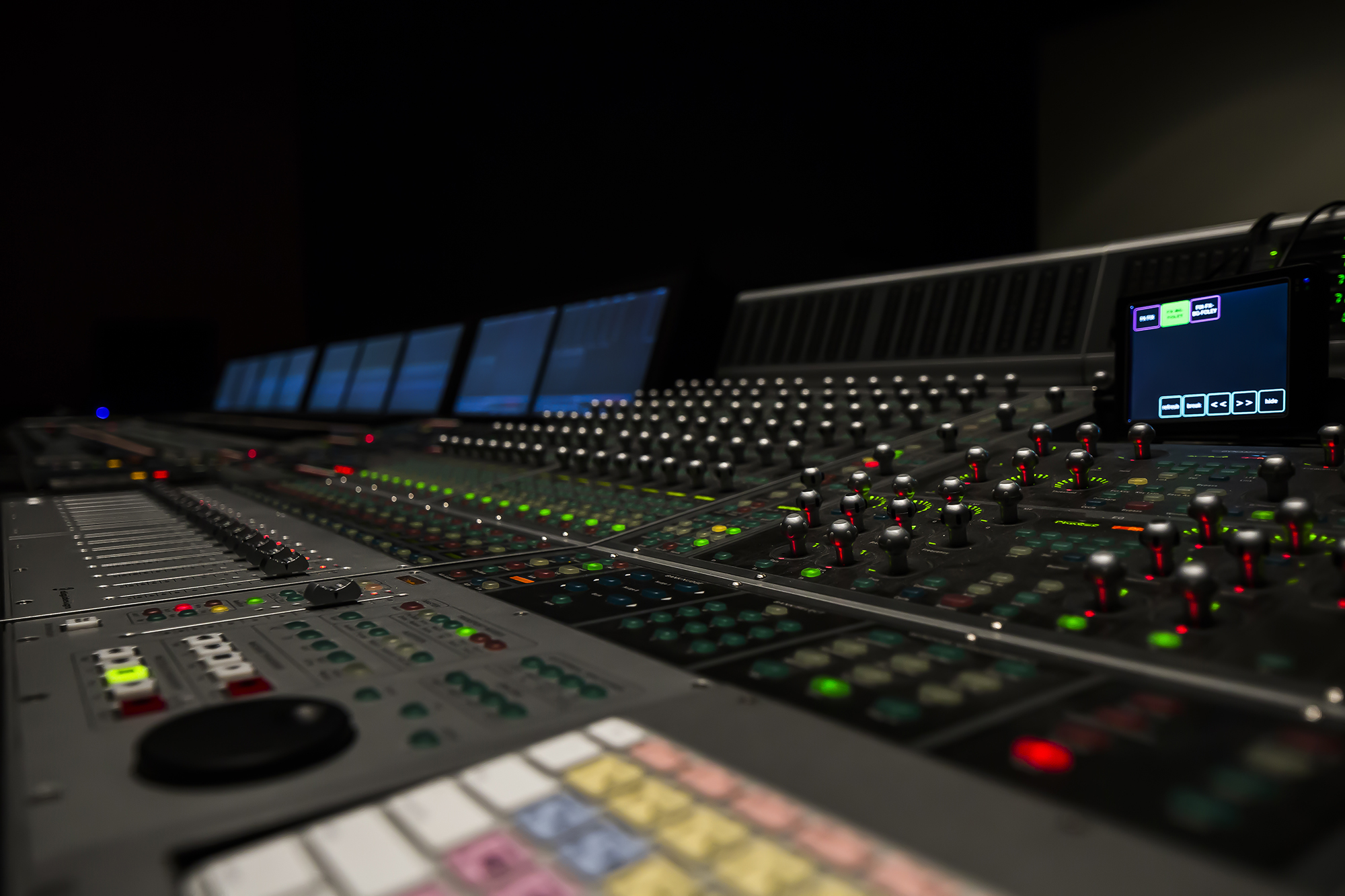Overview
DFC3D
Explicitly designed for multi-format film dubbing and post-production.
With an unrivalled installation base, the DFC digital mixing console is the obvious choice for the world’s premier motion picture facilities – including Warner Brothers, Goldcrest Films, Fox, Skywalker Sound, and Yash Raj Film. Over 70% of international blockbusters are mixed on the DFC.
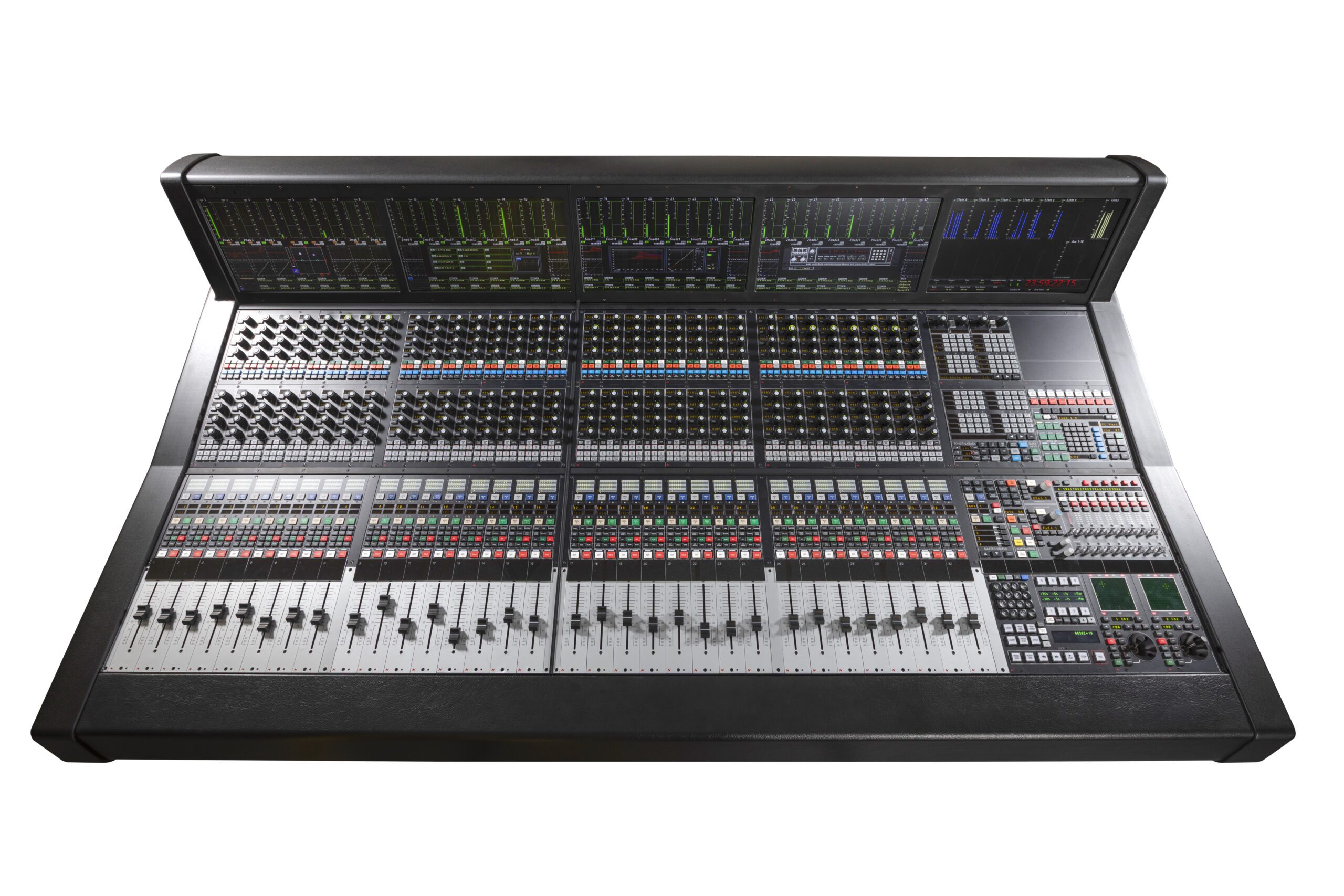
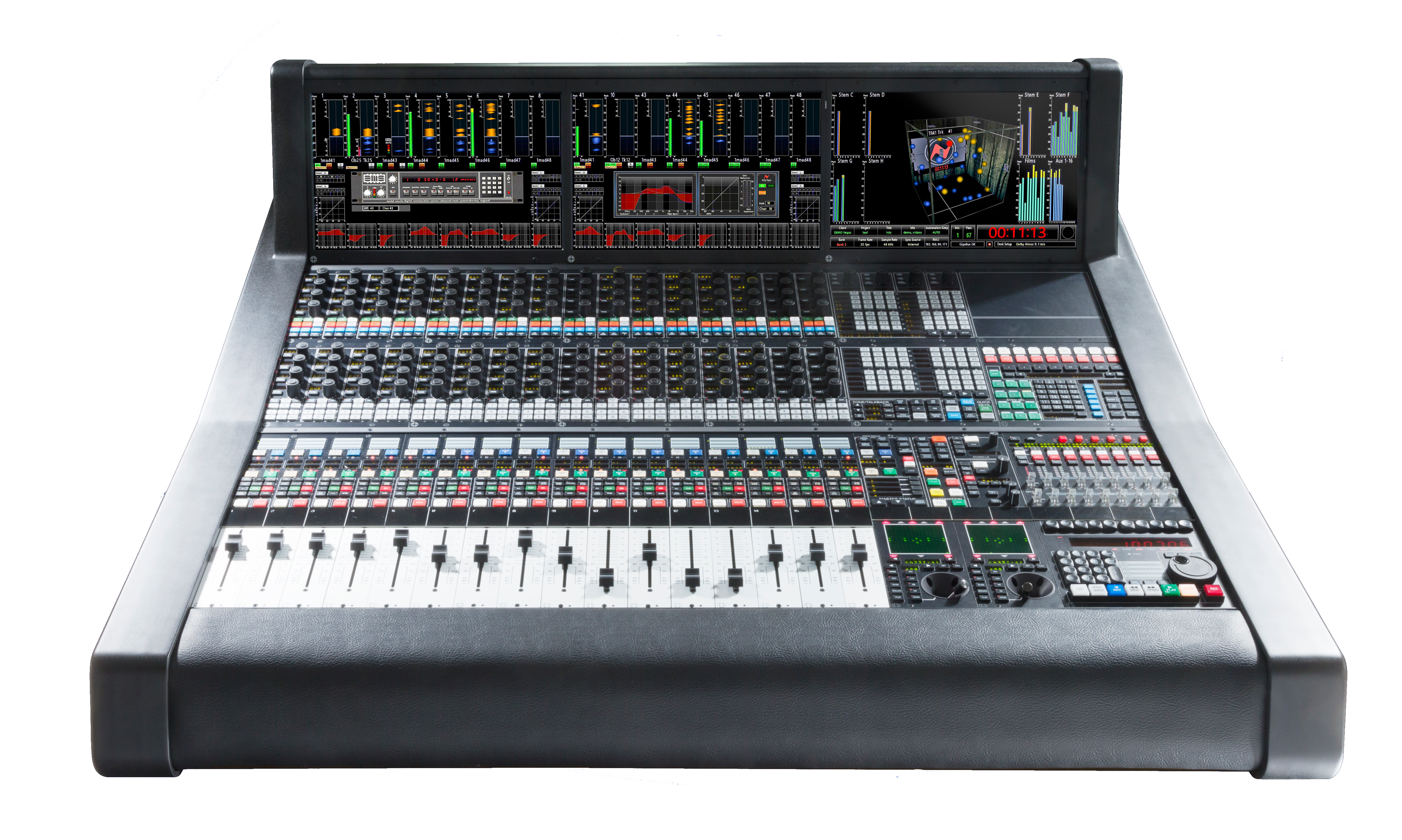
Ultimate Digital Performance
USP Mix Engine
At the heart of the DFC console is the USP, the world’s most powerful digital mixing and processing engine. The USP can deliver 1000 audio signal paths at up to 96kHz, 24 bit in a single, high-resolution DFC signal-processing tower. No other digital post-production console can offer the sheer power required to handle the demands of tomorrow’s content.
Multi-Layer Control
The console surface is fully assignable to accommodate many inputs within a realistic working footprint, with signal paths and EQ and dynamics mapped functions to provide fast and intuitive operation. Each channel has access to six banks of four path layers each, a total of 24 pages of assignability. Using the pre dub groupings, any channel strip can control all the resources for mono, stereo or up to 16 channel inputs.
Custom Console Layouts
The DFC3D system integration is achieved via Ethernet architecture. As a result, console sections can be flexibly positioned depending on the mix requirements. Each surface section, SPS rack and Encore3 PC can link using existing facility infrastructure, allowing technicians to create custom console layouts tailored to each mix.
Totally Assignable Logicators
The channel strip provides total control with the patented, tactile touch-sensitive Logicator rotary controls, giving an instant visual reference to each knob setting and control over every element in the signal path – no matter how complex the mix. Through intuitive assignment, the Logicators are process-grouped to allow immediate access to parameter controls without interrupting the creative workflow.
DAWSync Synchronisation
Neve DAWSync is the modern method of providing synchronisation between the DFC3D and multiple DAWs. DAWSync delivers an elegant and straightforward solution for machine control synchronisation with DAWs using a plug-in interface method. The plug-in provides instant lock from the DAW timeline to the DFC automation so that audio, video, and console automation instantly roll together without any delay or complicated synchronisation setups. DAWSync reads transport and timeline information from the DAW and transfers that data to encore over the network, and also provides extended 9-pin track arming and input switch functionality using the DAWSync USB control.
Encore 3 Automation
The DFC3D automation system uses AMS Neve’s proprietary Encore 3 system, the latest generation of the acclaimed Encore automation. Encore 3 is a total automation system that allows for automation of all controls on the console, including aux and stem routing. The DFC3D also provides effortless control of DAWs using the HUI protocol with up to 5 DAW’s connected simultaneously. Encore:3 Automation Reconform delivers efficient workflow as picture re-cuts go up to the last possible moment. In addition, the DFC can import the change-list, significantly reducing the workload on the Mixer and allowing the Director freedom to make creative changes right up to the dub.
High Resolution Meterbridge
Custom Meter Configurations
The DFC3D uses full-colour, large TFT displays for its channel and master sections with dynamically adjustable brightness, ideal for working in large dubbing theatres. The TFT’s have eight different completely configurable layouts with customised selections of the master meter per console partition.
16-Wide Stem & Predub Meter Blocks
The DFC3D master meter can display up to 16 stem blocks, each with 16 individual bar graph meter displays providing an in-depth overview of all possible output paths. Each bar graph display is split, showing the send and return of the bus to and from the stem recorder providing visual confidence over all outgoing signals.
User-Configurable Display
The DFC3D’s metering options can be changed on the fly, and each operator can have a different meter setup, tailored for the discipline they are working on. This also minimises distracting information from non-relevant meters and objects. Additionally, pop-up plugin displays can appear when their associated controls are touched; waveform displays are cached, so no prior play pass is needed when reloading a setup. Finally, stem and object routing, status, MADI status, timecode, and project settings can all be displayed on the master meters, allowing for quick diagnostics.
3D Spatial Panner Display
The DFC3D’s unique spatial panner is optimised for three-dimensional workflow, providing an efficient mixing experience and a quick transition from conventional mixing techniques. The “camera” angle can be infinitely controlled, and the 3D visualisation re-skinned for an accurate virtual representation of the sound stage. This 3D display allows for sonic object placement across three axes with room adjustment and speaker placement options to match the virtual environment to the theatre.
Vertical Wavtrack Meter
The vertical WavTrack meter displays a 3D textured waveform for the selected audio pathway. Waveforms are drawn dynamically upon registering the audio signal entering the channel path, with multiple display options to colour match stem groups and adjust the waveform appearance.
Dedicated Processing Display
The channel TFT display is split into easy to digest sections, with waveform, gain reduction, stem routing, and EQ & dynamics curve on display at all times. This system gives an at-a-glance overview of audio processing and signal flows.
Native 3D Mixing
Pioneering Atmos Audio
AMS Neve worked in consultation with Dolby before the release of Dolby Atmos®, allowing both teams to look collaboratively at how content in this object-based format could be efficiently created. As a result, the first film natively mixed in the Dolby Atmos format was ‘Oblivion’. This feat was achieved using an AMS Neve DFC console with both Dolby and AMS Neve engineers present at the studios of Skywalker Sound to offer advice and support to the mixing crew.
Native Dolby Atmos® Mixing
Dolby Atmos® is the latest immersive 3D surround sound, initially geared towards commercial cinema but now adapted for the music industry and beyond. DFC3D achieves the most flexible workflow for Dolby Atmos by assigning its 192 busses and 12 stems, giving super-fast access to traditional bed stems and discrete objects from the console surface. This allows the mix engineer to dynamically choose whether a sound should be assigned to an object or the bed.
Native Auro-3D® & IMAX Mixing
The DFC3D mix engine can mix natively in three-dimensional sound-space with its 16-wide stems and predubs. This allows for effortless creation of content of all Auro3D® formats including popular Auro-3D®11.1 and Auro-3D 15.1 formats and IMAX 12.0.
Direct Dolby RMU Control
DFC3D is tightly integrated with the Dolby Rendering & Mastering Unit (RMU), including level control, dim & cut functions. This allows for non-destructive post-rendering 3D monitoring control from the console surface.
Flexible Monitoring Options
The DFC3D has been designed for maximum flexibility by supporting external stem monitoring from multiple DAW’s. Object-based stems, external stems and traditional channel-based stems can be controlled from the DFC3D’s monitoring system, allowing for a fast workflow between multiple systems in the demanding environment of the modern dubbing theatre.
192 Bussing System
The DFC3D has a huge bus count of 192 independent busses allowing incredible flexibility and concurrent multi-format mixing. For example, producing a stereo, 5.1 and an Atmos object-based mixes simultaneously from the same automation pass or delivering any other format from the Dolby Atmos objects through the configuration of the DFC3D’s 12 stem system.
Digital Signal Processing
8-Band EQ
The powerful digital EQ included in the DFC3D console features eight completely configurable parametric bands, each with six selectable curve settings including a crucial ‘notch with listen’ option. All eight bands can work across the full frequency spectrum between 12Hz and 20kHz and feature continuously variable cut and boost +/-24db Making the DFC3D EQ the ultimate filtering solution for feature film workflows.
Subharmonic Synthesiser
The Subharmonic Synthesizer has two bands, each of which has a sweepable capture band between 15Hz and 160Hz. The resultant harmonics are selectable in semitone steps from zero (matching the capture frequency) down to two octaves below.
Optional Graphic EQ Panel
The Graphic EQ Panel is an optional hardware upgrade that provides dedicated control of EQ on one channel, track or group. Up to two Graphic EQ Panels per console, partition can be assigned to any channel, track or group in the same section.
Multi-band DeEsser
The DeEsser uses the same filter and compressor DSP much loved by DFC users combined to make a fully automated dual-band compressor with high or band-pass selection.
Powerful Dynamics
The powerful dynamics controls found on the DFC3D provide total control over the entire dynamic range of all audio pathways. Up to two compressor/limiters can be assigned to an audio path, featuring controls for threshold, ratio, attack & release times, knee, manual or automatic gain make-up. The compressor has a full gain range of -90dBFS to 0dBFS. Each channel also has access to a powerful expander/gate with threshold, depth, attack & release times, ratio soft knee and hysteresis.
AMS RMX16 Plugin
The legendary RMX16 is available on the DFC as an exact algorithmic recreation of the original unit. Four instances of the RMX16 can be hosted on each QuadMADI64 card to be used as plugins on any selected channel or bus.
Our Community
Abbey Road
Fox
Goldcrest
Warner Bros, De Lane Lea
Twickenham Studios
Lipsync
DFC: On Video
Gallery
Gallery
More Information and Support
General Specification
- TFT Channel display
- TFT Master display
- Encore:3 automation system (compatible with 1800 AMS Neve consoles)
- Off-line edit options offering enormous cost savings
- Most powerful DSP engine – Ultra Scale Processing cards – 1000 paths at 96kHz
- Neve EQ, Dynamics and Bass Enhancement plug ins with linked dynamics
- Faster Control Surface
- Expanded 12 Stem Mixing
- MIOS96 new I/O system with full remote control
- Complete integrated machine control
- Optional Monitor Facilities Rack
- WavTrak display providing the user with level and dynamics metering, graphical EQ curve and audio waveform information on a path by path basis.
Documentation available on request. Please email info@ams-neve.com with your console serial number.
Want to learn more about the DFC3D?
Please fill out this contact form and we will get back to you as soon as possible.

